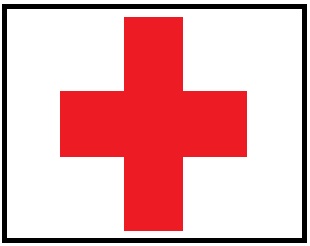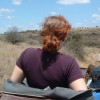Home First Aid On Children
As a young mum the idea of my child being hurt, and me not knowing how to deal with the situation, terrifies me. During pregnancy I read book after book on childhood diseases, common injuries, and worst case scenarios - which only scared me more! So here's an easy to follow, hopefully not so scary, guide to basic first aid on children.
Remember! If you're ever worried about a childs injury, or feel like you just can't deal with the situation, whatever it is, always call a doctor or the Emergency Services, they are there to help.

Every home should have a basic first aid kit available. You can buy these ready stocked in supermarkets, pharmacies, even D.I.Y stores, or you can gather the necessary items yourself and store them in an appropriate box or air tight container. Remember to re-stock when something is used, plasters go especially fast with small children! Here are the basics:
- Assorted plasters
- Cotton wool
- Scissors
- Sterile dressings
- Surgical tape
- Steristrips
- Crepe and Gauze bandages
- Safety pins
- Triangular bandages
- Antiseptic solution or wipes
- Tweezers
- Paracetamol, calpol etc.
- Sting relief cream
- Antihistamines
- Arnica
- Thermometer
- Doctors non-emergency and emergency telephone numbers
Bumps and bruises
All parents know that when a child first becomes mobile, the falling over never seems to stop! Bumps and bruises are common place, and are usually nothing to be concerned about. Swelling will normally go down within a week, although bruises will occasionally take up to two to fade out completely. If your child seems overly sleepy or disorientated after a fall or bump to the head, keep them awake and call your doctor for advice, as it could be concussion. Always call the Emergency Services if you are worried, it's what they're there for.
What to do:
- Hold a cold cloth, or anything frozen wrapped in a tea towel, against the area for around twenty minutes, or as long as your child will let you! This will help to stop the swelling and reduce any pain. Apply arnica to bring out the bruise, my family swears by it.
Minor grazes and small cuts
These can usually be looked after by a parent, but if for any reason you are worried about infection follow the steps, then take your child to a doctor.
What to do:
- Under a running tap, clean the injury, making sure that there is nothing stuck to it, then use an antiseptic wipe of cream to fight any chance of infection. These can sting, be sure to tell your child how brave they are!
- Let the area dry naturally or dab dry with a cloth, towels aren't the best for this as they shed fibres easily, which can get stuck to a cut or graze. Once dry, cover with a dressing or plaster.
Bites and stings
Wasps and Bees will invariably be around whenever summer and ice creams appear, and can give a painful sting. Midges and mosquito bites are itchy and uncomfortable. It is uncommon for people to have an allergic reaction to bites or stings, but if your child has trouble breathing after being bitten or stung call the Emergency Services straight away, otherwise home treatment is fairly simple.
What to do:
- Sometimes when a bee stings, the stinger is left in the skin. Take it out with tweezers, being careful not to squeeze the poison sack, as this would push more poison into the skin.
- Use a cold cloth or frozen anything wrapped in a tea towel to ease the pain and bring down any swelling.
- Massage sting relief cream into the area, or let the child do this if they can reach, involving them can distract them from the pain.








